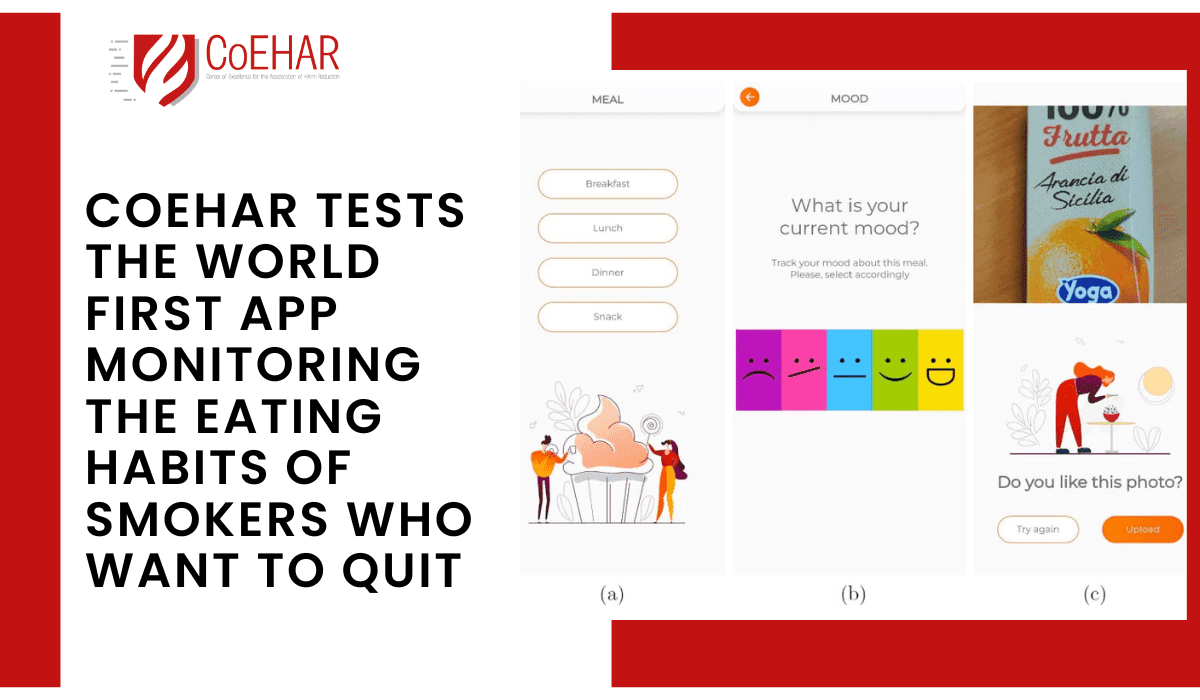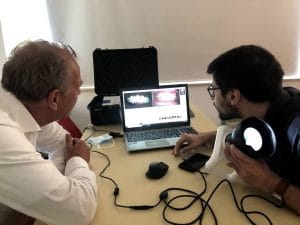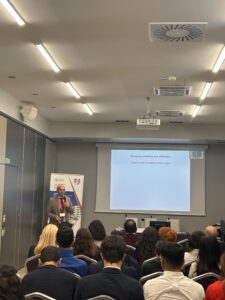Catania, February 28, 2023 – It is quite recognized by the scientific community that quitting smoking very often determine strict correlations with dietary habits’ changes of individuals involved in the smoking cessation process, in that it is frequently linked to weight gain, eating and mood disorders, especially in the initial period of abstinence. Therefore, counseled changes of dietary habits result crucial to make the smoke quitting successful.
FoodRec is the project of the Center of Excellence for the Acceleration of Harm Reduction (CoEHAR), that exploits technology to monitor the dietary habits of people during their smoke quitting process, catching relevant changes which can affect the patient health and the success of the process. In their recent publication “Development and user evaluation of a food-recognition app (FoodRec): Experimental Data and Qualitative Analysis”, just published on Health psychology Research, the interdisciplinary academic research group of computer scientists, clinical psychologists and medical doctors explained how they created and tested an app for food recognition to monitor smokers’ mood status and dietary habits in an uncontrolled pre-test post-test open pilot study. The main idea was to assess the user’s dietary habits and anomalies at different times during the quitting process to assess correlations between the observed data and known information about the cessation treatment.
Tests included 149 smokers involved in a smoke quitting process, aged between 19 and 80, who used the FoodRec App for two consecutive weeks for usability and suitability assessments.
During the qualitative test, the majority of app users declared themselves extremely “happy” to be able to use this tool while trying to quit smoking. The App was perceived as extremely user-friendly and lightweight. It also turned out to be useful in the perception of users’ dietary habits and helpful in relieving the stress of a food intake reduction process.
Some qualities of the app were appreciated such as the attractive, streamlined and intuitive graphics of the “home” section, which allows an easy approach even by users with a lower mastery of the technological context. It was appreciated the small size that makes it easily usable on their device and the statistical section within the app that allows an easy monitoring of the diet. Additionally, the participants affirmed that they would recommend the app to family and friends. For the quantitative test, data were analyzed regarding users features, meals uploads, mood states and drink intakes.
“The experience gained in the current study will be used to modify and refine the large international clinical trial protocol during which we will test the app on a larger number of users and in clinical settings of smoking cessation programs. Issues related to some missing correlation between the smoke quitting process and the food recognition approach are to be solved with the next versions of the app, according to the upcoming project phases, which will also make use of enhanced Artificial Intelligence techniques” – said prof. Sebastiano Battiato, University of Catania.
“The information inferred in the context of the FoodRec project will help researchers to analyze eating habits of smokers who are trying to quit by correlating smoking habits with eating habits and creating increasingly targeted and effective paths to definitively tackle smoking addiction”, concluded prof. Alessandro Ortis, of the same University.
The algorithm created by the CoEHAR researchers to track and monitor dietary habits, just identifying individual food items present in an image, is a step forward in research applied to smoking cessation and it could be also applied to other research fields.




